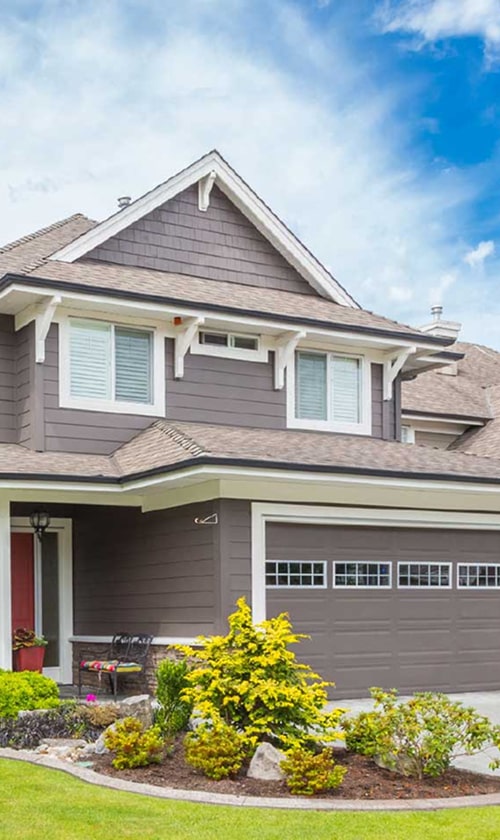Understanding HVAC System Sizing

Choosing the right size for your HVAC system is crucial for achieving optimal energy efficiency and maintaining comfort. It involves precise calculations and consideration of various factors unique to your space.
The Importance of Correct Sizing
Selecting an HVAC system of the appropriate size for your space is fundamental to avoid the pitfalls of over- or under-sizing. A too-large system will cycle on and off frequently, leading to increased wear and tear, whereas a too-small system will run continuously, failing to reach the desired temperature and increasing energy consumption. Both scenarios contribute to inefficiency and can shorten the lifespan of your equipment.
Calculating Your Space’s Heating and Cooling Needs
To calculate the heating and cooling needs of your space, we perform a load calculation, which takes into account the square footage, climate, layout, and the height of your ceilings. This calculation is crucial for determining the capacity required for your HVAC system, measured in British Thermal Units (BTUs) per hour.
Square Footage: The size of your home directly impacts the capacity needed.
| Home Size (sq ft) | Estimated BTU/h (Cooling) | Estimated BTU/h (Heating) |
|---|---|---|
| 1,000 | 21,000 | 30,000 to 60,000 |
| 2,000 | 34,000 | 60,000 to 90,000 |
| 3,000 | 48,000 | 90,000 to 120,000 |
Climate: Your regional climate affects the cooling load and heating requirements.
Layout: The number of rooms and their orientations will influence airflow and temperature distribution.
Ceiling Height: Higher ceilings mean more cubic feet to heat or cool, thus requiring more energy.
By combining these factors, we gain an accurate assessment and can choose a HVAC system size that will run efficiently without unnecessary over-exertion or wastage of energy.
Energy Efficiency and HVAC Systems

Investing in an energy-efficient HVAC system is crucial for reducing energy consumption and saving on utility bills. The key metrics to consider are the SEER, EER, and AFUE ratings which quantify a system’s efficiency.
SEER, EER, and AFUE Ratings
SEER (Seasonal Energy Efficiency Ratio) measures air conditioning and heat pump cooling efficiency. A higher SEER rating indicates a more efficient system. As of January 2023, the minimum standard SEER rating is 14 in the northern United States and 15 in the southern United States. However, ENERGY STAR-certified units often start at a SEER of 15.5, offering even greater efficiency.
| Efficiency Category | Typical SEER Rating |
|---|---|
| Standard | 14-15 |
| High-Efficiency | 16-20 |
| Very High-Efficiency | 21+ |
EER (Energy Efficiency Ratio) provides a snapshot of cooling efficiency by measuring the wattage and BTUs (British Thermal Units) under specific conditions. It is useful for evaluating performance at peak operating times. Unlike SEER, EER does not account for seasonal temperature fluctuations.
AFUE (Annual Fuel Utilization Efficiency) pertains to gas and oil-fired furnaces, indicating the percentage of fuel converted to heat. A higher AFUE value means more efficient usage of fuel. Modern, high-efficiency furnaces typically have AFUE ratings between 90% and 98.5%.
- Standard Efficiency Furnaces: 80% – 89% AFUE
- High-Efficiency Furnaces: 90% – 98.5% AFUE
Maximizing Efficiency with Proper Maintenance
Periodic and proper maintenance is essential to sustain an HVAC system’s efficiency. Here are key maintenance aspects to enhance system performance:
- Air Filter Replacement: Ensure air filters are replaced every 1 to 3 months to prevent airflow restrictions and maintain system efficiency.
- Ductwork Inspection: Leaky or poorly insulated ducts can reduce HVAC efficiency by up to 20%. Regular inspections can identify and rectify these issues.
- Professional Tune-ups: An annual professional tune-up can keep an HVAC system running at peak efficiency. Technicians will inspect electrical connections, lubricate moving parts, check system controls, and ensure that the thermostat is calibrated accurately.
We see consistently that well-maintained HVAC systems maintain their rated efficiency levels for a longer duration, directly impacting energy consumption and cost savings.
Choosing the Right HVAC Equipment

Selecting the ideal HVAC equipment ensures your system operates at peak efficiency. We’ll discuss the different types of HVAC systems and recent innovations that can impact your choice.
Types of HVAC Systems
When considering HVAC systems, it’s crucial to understand that the size and type directly affect energy efficiency. For a typical residential setup, we can choose from several types:
-
Central AC Systems: These rely on a network of ducts to distribute cool air through the home. They feature an outdoor condenser coil and an indoor evaporator coil. A compressor circulates refrigerant between these coils, changing it from gas to liquid and back, to transfer heat.
-
Heat Pumps: Heat pumps serve dual purposes, providing both heating and cooling. During warmer months, a heat pump works like a conventional AC system, while in colder months, the process reverses, extracting outdoors heat to warm the house.
-
Ductless Mini-Split Systems: These are ideal for spaces where traditional ducted systems are not feasible. Mini-splits consist of an indoor unit connected to an outdoor compressor/condenser. They are scalable and can be installed in multiple rooms for zoned temperature control.
The capacity of HVAC systems is measured in BTUs (British Thermal Units) for heating and in tons for cooling. A well-sized HVAC system should match the unique demands of your space to avoid inefficiency and increased energy costs.
Innovations in HVAC Technology
Advancements in HVAC technology have made significant strides in improving energy efficiency:
-
Variable Speed Compressors: These compressors can adjust their speed to match the required cooling or heating needs, offering significant energy savings and enhanced comfort control compared to single-speed compressors.
-
Smart Thermostats: With smart thermostat integration, HVAC systems can now be controlled for efficiency depending on occupancy, weather conditions, and user-preferences, all from a smartphone or device.
-
Eco-friendly Refrigerants: Manufacturers now use refrigerants that have a lower global warming potential, reducing the environmental impact of HVAC systems while maintaining efficiency.
It is vital for us to stay informed about these innovations to make an energy-efficient choice when selecting HVAC equipment for installation or upgrades.
Installation Considerations for HVAC
When selecting an HVAC system, the installation process is as crucial as the equipment itself. It’s essential to ensure proper installation to maximize energy efficiency and system performance.
Professional vs. DIY Installation
We strongly recommend professional installation for your HVAC system. This ensures:
- Safety: Professionals are trained to handle refrigerants and electrical components safely.
- Expertise: Technicians possess the necessary skills to size and fit systems accurately.
- Warranty: Many warranties require installation by a certified installer to remain valid.
- Codes and Regulations: Professionals will ensure your installation complies with local building codes.
Considering professional installation is an investment, not just in the function of your HVAC system but also in peace of mind.
Evaluating Your Home’s Ductwork
Before installation, we must assess your home’s ductwork. This involves:
- Inspection: Checking for leaks or damage that can compromise efficiency.
- Insulation: Ensuring ducts are properly insulated to maintain air temperature.
- Sizing: Verifying ductwork is correctly sized to match the new system for optimal airflow.
Our team focuses on each aspect of ductwork to prevent energy loss and improve the overall system efficiency. If you’re budgeting for a new HVAC system, include potential ductwork improvements in your financial plan.
Costs and Financial Incentives
Selecting the ideal HVAC system size significantly influences our energy bills and budget. We must ensure the system we choose aligns with our financial capabilities and available incentives.
Estimating the Costs of HVAC Systems
To accurately estimate the upfront cost of an HVAC system, we need to consider several factors. These include the size of the unit, which is determined by our home’s square footage and local climate. The type of HVAC system—whether it’s a central air conditioner, heat pump, or furnace—also impacts the cost. Electricity consumption is another crucial factor to consider when estimating costs, as it directly affects ongoing energy bills. For a specific estimate, consulting with a professional is best, but to give us a general idea:
- Small homes (up to 1,500 sq ft): $2,000 – $8,000
- Medium homes (1,500 – 3,000 sq ft): $3,000 – $10,000
- Large homes (more than 3,000 sq ft): $5,000 – $12,000
These costs can vary depending on the complexity of the installation and the energy efficiency of the unit chosen.
Leveraging Rebates and Incentives
To offset the cost of a new HVAC system, we should take advantage of rebates and incentives. Many local and federal programs offer financial incentives to encourage the adoption of energy-efficient systems. We should research:
- Local rebates: Offered by utility companies, tailored to our local climate.
- Federal tax credits: For qualifying energy-efficient HVAC systems.
It’s essential to check the specifics of each program, since they may have requirements regarding the system’s Seasonal Energy Efficiency Ratio (SEER) or Energy Star certification. Below is an example rebate structure we might encounter:
- Energy Star-certified A/C: Up to $300 rebate.
- SEER rating of 16 or more: Additional $200 rebate.
- Heat pump installation: Up to $500 rebate.
By thoroughly researching and understanding these financial incentives, we can make an educated decision that balances initial costs with long-term savings on energy bills.
Frequently Asked Questions
When selecting the right HVAC system, it’s crucial to consider size for maximized energy efficiency and performance. Here, we provide clear answers to common queries to assist in making informed decisions.
How can I calculate the correct HVAC size for my home?
To accurately determine the right size for your HVAC system, a Manual J load calculation is essential. This involves assessing various factors like insulation quality, window sizes, and house orientation. Leveraging this detailed analysis ensures the system matches your home’s specific needs.
What factors are important when determining the sizing of my HVAC system for optimal energy efficiency?
Key factors include local climate, home layout, insulation quality, air infiltration rates, and the number/type of windows. These elements affect heat gain/loss in a property, informing the capacity and efficiency of your HVAC selection for peak performance and lower energy bills.
Can you explain the pros and cons of oversizing versus undersizing my HVAC system?
An oversized HVAC system can lead to frequent cycling, uneven temperature, increased wear, and higher energy costs. Conversely, an undersized unit struggles to maintain comfort levels, leading to continuous operation and premature wear. Perfect sizing avoids these issues, offering reliability and cost-effectiveness.
What is the most energy-efficient HVAC system available for residential use?
Currently, geothermal heat pump systems rank as the most energy-efficient for homes, offering significant energy savings and a smaller carbon footprint. These systems leverage the earth’s stable temperature to heat and cool homes efficiently.
How does square footage impact the size of the AC unit I should install?
Square footage is a critical determinant for AC unit size. Generally, you’ll need 20 BTU of air conditioning per square foot. However, this is a base estimation and must be refined with other factors considered during a professional load calculation.
What are the best practices for choosing an HVAC system for a large house, such as one that is 3500 sq ft?
For large homes, it’s best to consult with HVAC professionals who can perform precise load calculations, often suggesting multi-zone systems for efficiency. They’ll also evaluate ductwork and insulation to recommend a system that maintains consistent comfort in every room.




